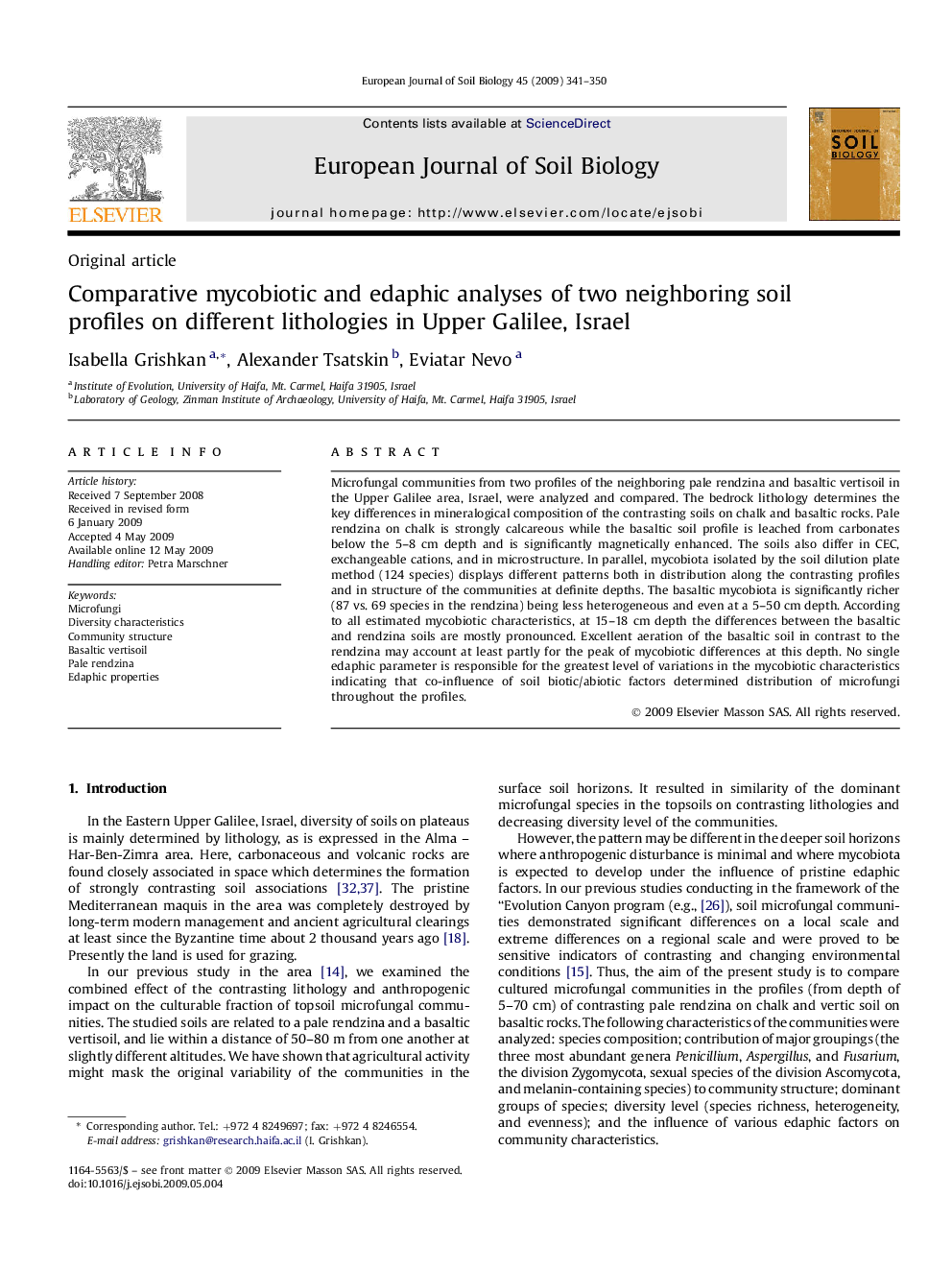| Article ID | Journal | Published Year | Pages | File Type |
|---|---|---|---|---|
| 4392198 | European Journal of Soil Biology | 2009 | 10 Pages |
Microfungal communities from two profiles of the neighboring pale rendzina and basaltic vertisoil in the Upper Galilee area, Israel, were analyzed and compared. The bedrock lithology determines the key differences in mineralogical composition of the contrasting soils on chalk and basaltic rocks. Pale rendzina on chalk is strongly calcareous while the basaltic soil profile is leached from carbonates below the 5–8 cm depth and is significantly magnetically enhanced. The soils also differ in CEC, exchangeable cations, and in microstructure. In parallel, mycobiota isolated by the soil dilution plate method (124 species) displays different patterns both in distribution along the contrasting profiles and in structure of the communities at definite depths. The basaltic mycobiota is significantly richer (87 vs. 69 species in the rendzina) being less heterogeneous and even at a 5–50 cm depth. According to all estimated mycobiotic characteristics, at 15–18 cm depth the differences between the basaltic and rendzina soils are mostly pronounced. Excellent aeration of the basaltic soil in contrast to the rendzina may account at least partly for the peak of mycobiotic differences at this depth. No single edaphic parameter is responsible for the greatest level of variations in the mycobiotic characteristics indicating that co-influence of soil biotic/abiotic factors determined distribution of microfungi throughout the profiles.
